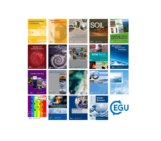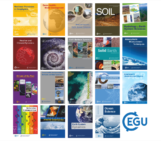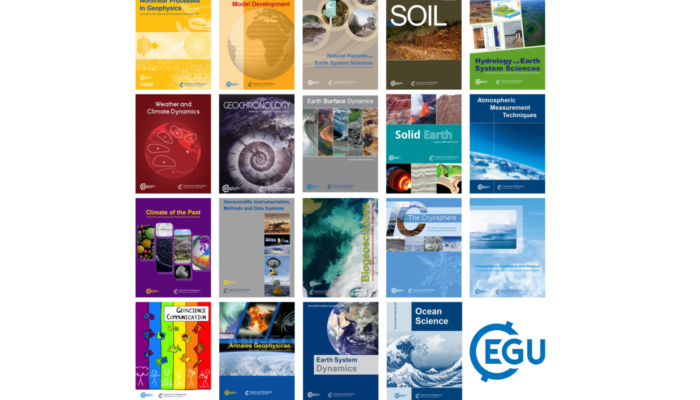
Each month we feature specific Divisions of EGU and during the monthly GeoRoundup we put the journals that publish science from those Divisions at the top of the Highlights roundup. For June, the Divisions we are featuring are: Ocean Sciences (OS), Nonlinear Processes in Geosciences (NP), and Geoscientific Instrumentation, Methods and Data Systems (GI). They are served by the journals: Ocean Sciences (OS), Geoscientific Model Development (GMD), Nonlinear Processes in Geophysics (NPG), Weather and Climate Dynamics (WCD) and Geoscientific Instrumentation, Methods and Data Systems (GI).
Featured highlights
Geoscientific Model Development:
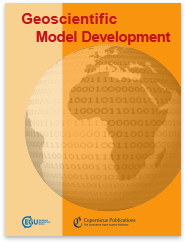 Pace v0.2: a Python-based performance-portable atmospheric model – 14 June 2023
Pace v0.2: a Python-based performance-portable atmospheric model – 14 June 2023
It is hard for scientists to write code which is efficient on different kinds of supercomputers. Python is popular for its user-friendliness. We converted a Fortran code, simulating Earth’s atmosphere, into Python. This new code auto-converts to a faster language for processors or graphic cards. Our code runs 3.5–4 times faster on graphic cards than the original on processors in a specific supercomputer system.
Response of the sea surface temperature to heatwaves during the France 2022 meteorological summer – 09 June 2023
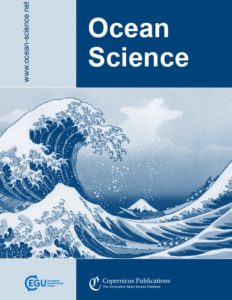 In the summer of 2022, France experienced a series of unprecedented heatwaves. This study is the first to examine the response of sea surface temperatures to these events, using spatial operational data and attributing the observed abnormally warm SSTs to atmospheric forcings. The findings of this study underscore the critical need for an efficient and sustainable operational system to monitor alterations that threaten the oceans in the context of climate change.
In the summer of 2022, France experienced a series of unprecedented heatwaves. This study is the first to examine the response of sea surface temperatures to these events, using spatial operational data and attributing the observed abnormally warm SSTs to atmospheric forcings. The findings of this study underscore the critical need for an efficient and sustainable operational system to monitor alterations that threaten the oceans in the context of climate change.
Seasonal overturning variability in the eastern North Atlantic subpolar gyre: a Lagrangian perspective – 23 June 2023
This study uses the trajectories of water parcels traced within an ocean model simulation to identify the pathways responsible for the seasonal cycle of dense water formation (overturning) in the eastern subpolar North Atlantic. We show that overturning seasonality is due to the fastest water parcels circulating within the eastern basins in less than 8.5 months. Slower pathways set the average strength of overturning in this region since water parcels cannot escape intense wintertime cooling.
What distinguishes 100-year precipitation extremes over central European river catchments 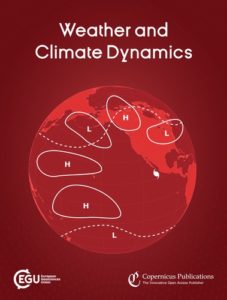 from more moderate extreme events? – 12 June 2023
from more moderate extreme events? – 12 June 2023
In this study, we analyse the generic atmospheric processes of very extreme, 100-year precipitation events in large central European river catchments and the corresponding differences to less extreme events, based on a large time series (~1200 years) of simulated but realistic daily precipitation events from the ECMWF. Depending on the catchment, either dynamical mechanisms or thermodynamic conditions or a combination of both distinguish 100-year events from less extreme precipitation events.
Other highlights
Atmospheric Measurement Techniques:
Applying machine learning to improve the near-real-time products of the Aura Microwave Limb Sounder – 21 June 2023
The Volyn biota (Ukraine) – indications of 1.5 Gyr old eukaryotes in 3D preservation, a spotlight on the “boring billion” – 16 June 2023
Rate-induced tipping in natural and human systems – 28 June 2023
Natural Hazards and Earth System Sciences:
Contribution of solitons to enhanced rogue wave occurrence in shallow depths: a case study in the southern North Sea – 26 June 2023
The 2018 west-central European drought projected in a warmer climate: how much drier can it get? – 19 June 2023
EGU science in the news – June 2023
- Scientists show way to mitigate extreme weather events (Mirage News), based on a study published in the EGU journal Nonlinear Processes in Geophysics
- Spain’s Seafaring Sports See Fewer Calm Days (EOS), based on an EGU press release issued during the EGU23 General Assembly
- As Wildfires Grow, So Could Methane Emissions (EOS), based on a study published in the EGU journal Atmospheric Chemistry and Physics
- Ancient giant eruptions may have seeded nitrogen needed for life (ScienceNews) quotes study presented at the EGU23 General Assembly
- New study reveals Antarctic ice growth and speaks of melting ice myth (The Rio Times) based on a study published in the EGU journal The Cryosphere
- Siberia’s ‘gateway to the underworld’ megaslump is revealing 650,000 year-old secrets from its permafrost (Live Science) based on research presented at the EGU23 General Assembly
- European Geoscience Union calls on UCalgary undergrad for artist-in-residence role (University of Calgary News) on EGU’s Artist in Residence program
- Harnessing chaos: Simulation experiment demonstrates way to mitigate extreme weather events (Phys.Org) based on a study published in the EGU journal Nonlinear Processes in Geophysics
- Geologists Drilling Deep-Sea Hole Retrieve Deepest Earth Mantle Rocks Ever (IFL Science) cites EGU’s Geochemistry, Mineralogy, Petrology & Volcanology (GMPV) Division blog

